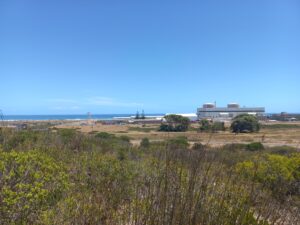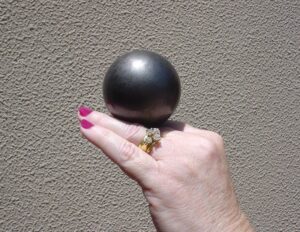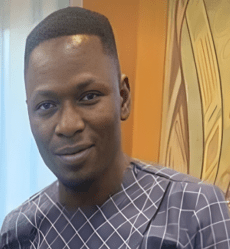By Kelvin KEMM (Dr)
Around the world, many countries are suffering from an electricity shortage. This is serious. It is serious because electricity is the basis of a modern GDP. Without energy, people are living in the Stone Age. Energy, in broad terms, is liquid fuels like petrol and paraffin, and also electricity. To make any sort of reasonable progress a nation needs these commodities. So, any sort of reasonable thought dictates that serious planning and contemplation must go into these vital building blocks of life.
First block: You cannot take a supposed ‘solution’ which has been proposed in a European country and then imagine that it will just work in Africa. Block 2: Think for yourself, and plan for your own conditions.
Let us get something clear; solar and wind can work for certain specialist functions, but you cannot run a country on solar and wind alone, or even as the major electricity source. Wind is good for a function like pumping water into a dam or reservoir because it does not matter at what time of the day you pump. Solar works for daytime electricity, ideally not connected to the grid at all, in in my opinion.
But if you have a cloudy or rainy day, you are in trouble. You cannot plan a solar system on the basis that there is always some other source of backup power standing by for use on a rainy day. If you do that, you must add the cost of the standby to the cost of the solar. You cannot ignore it, as so many people often do.

Sound thought leads one to the conclusion that the ideal answer for any African country is nuclear power. To some, that sounds scary because they imagine giant, dangerous, nuclear power plants. That is an incorrect image. There is now a class of Small Modular Reactors which has come into existence. This idea was initiated by South Africa some 30 years ago when a South African team started to develop the world’s first commercial Small Modular Reactor. A number of other countries have now followed the South African lead and are developing SMR technologies of various types.
A number of African leaders are wisely leading their countries on the sensible path of determining an African solution for African conditions, and have come to the conclusion that small nuclear reactors are the answer. One such leader is Ghana’s President Nana Akufo-Addo, who clearly indicated his personal support for nuclear power when he transferred responsibility for nuclear power from his Ministry of Energy into the Office of the President. The South African Small Modular Reactor, the HTMR-100, developed by Stratek Global in Pretoria, uses helium gas for reactor cooling.
This is extremely important because that means that it does not need to be placed near a large body of water. Most nuclear reactors in the world are built on a coastline or next to very large lakes. But African thinking for Africa says; build an electricity power source where you want the electricity. This could be near a large mining complex far inland, or way out in a very dry area of Somalia or Ethiopia, or for that matter, in a jungle area, where all rain goes straight into the ground. The South African All-Africa Design can be placed anywhere you like. The HTMR-100 can produce 100MW of process heat or 35MW of electricity.
Another interesting consideration is that an HTMR-100 can have its own electricity grid. It does not need to be integrated into any national grid. So, if you have a remote mining area, or remote town, then take the power station to the town. You don’t need to build long transmission lines, costing millions, to transport the electricity hundreds of kilometres. If you like, just have a local grid which is five or ten kilometres wide. President Akufo-Addo has said that Africa has come of age and needs to hold its rightful place on the world stage. He is totally correct. But to do that, any country needs a reliable supply of electricity. Small nuclear reactors sited around the country are the answer. Any country needs a reliable supply of electricity, which is not dependant on the weather.

‘Oh, but is it safe?’ some people will say. An HTMR-100 cannot experience a core meltdown, which is the most feared nuclear accident. The reactor has been designed to be walk-away-safe. If the worst of the worst were to happen, then all that the staff would do is go to the coffee shop and talk about what to do next. The reactor will do nothing except cool itself down perfectly safely, over the next few days. No human intervention is required.
The fuel used by the reactor consists of tennis ball size graphite balls which contain grains of uranium, the size of sugar grains. The balls are solid and can be thrown against a wall with no problem. Half a dozen balls will supply all the electricity for a family of four for 10 years.
South Africa has one of the oldest nuclear licencing authorities in the world, being over 40 years old. They would be most keen to collaborate with any African country, to assist in preparing for nuclear power. There is also a wealth of nuclear training options available from South Africa.
In the not-too-distant future, the whole world will be running on nuclear power. It is now time for vision and foresight. It is time, as President Akufo-Addo says, for Africa to take its rightful place on the world stage, and to show leadership in moving into a nuclear power future, as fast as possible. It can be done. It is not an overly optimistic dream. It is reality.
The SMR technology is here. We even have a reactor especially designed for African conditions, and that means all African conditions. We people living in africa know and understand the hot African sun, the violent rainstorms, the wide-open savannah, desert regions, long roads, and flooded rivers. The HTMR-100 was designed for all of that.
The African reactor for Africa is ready.
Dr Kemm is a nuclear physicist and is Past Chairman of the South African Nuclear Energy Corporation (Necsa). He is currently Chairman of Stratek Global, a nuclear project management company based in Pretoria, South Africa. The company carries out strategy development and project planning in a wide variety of fields for diverse clients. They are working towards building an HTMR-100 in Pretoria. [email protected].
www.stratekglobal.com










